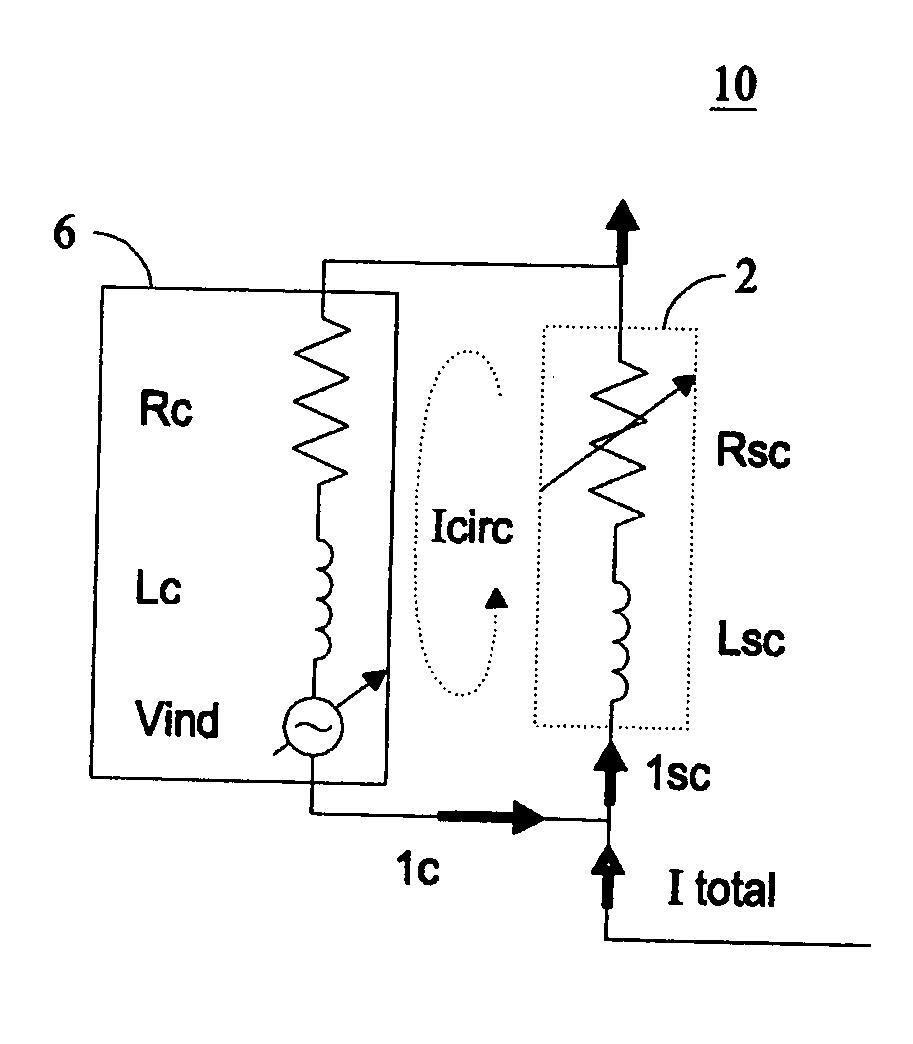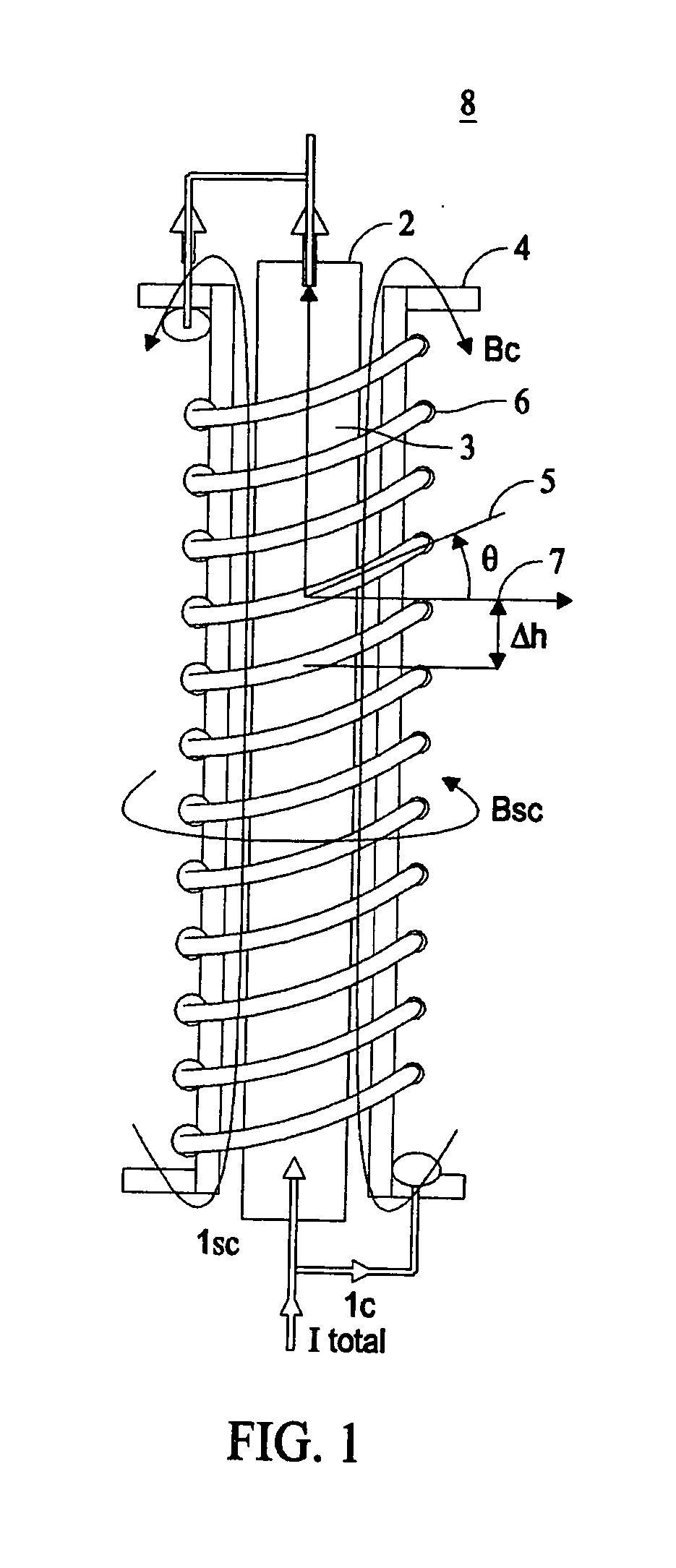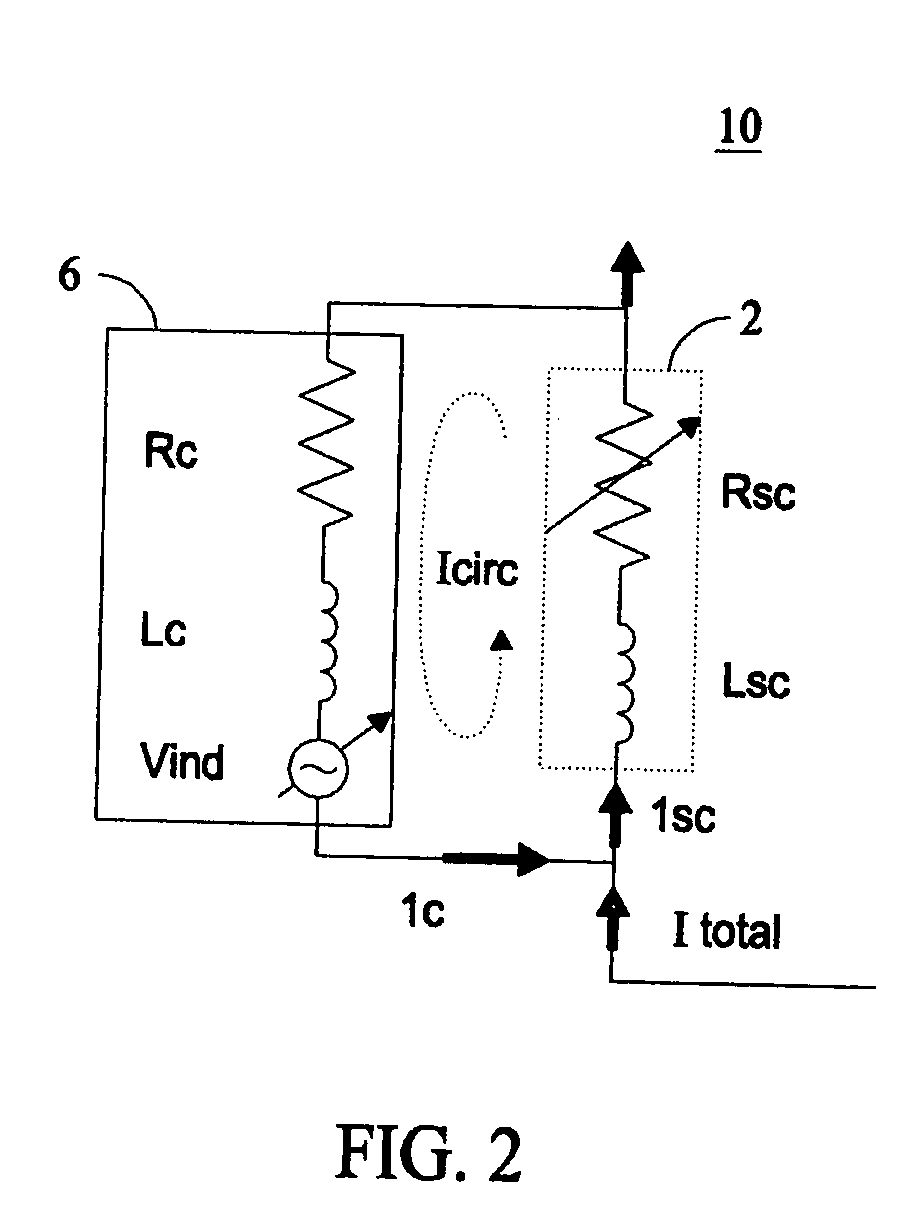Superconducting FCL using a combined inducted magnetic field trigger and shunt coil
a superconducting and magnetic field technology, applied in the direction of emergency protective circuit arrangements, emergency protective arrangements for limiting excess voltage/current, electrical equipment, etc., can solve the problem of a part of the fault current being diverted, and achieve the effect of improving the reliability of the device, less complexity, and adding to the complexity of the devi
- Summary
- Abstract
- Description
- Claims
- Application Information
AI Technical Summary
Benefits of technology
Problems solved by technology
Method used
Image
Examples
Embodiment Construction
[0029] U.S. patent application Ser. No. 11 / 097,560, entitled “Self-Triggering Superconducting Fault Current Limiter”, filed on Apr. 2, 2005, assigned to the assignee of the present invention, is herein incorporated by reference in its entirety. This application describes a FCL having a shunt and a trigger coil coupled in parallel with a superconductor which design is modular and scalable that functions as a “variable impedance” using components made of superconducting as well as conventional electrically conductive materials. U.S. Pat. No. 6,809,910, entitled “Method and Apparatus To Trigger Superconductors In Current Limiting Devices”, issued on Oct. 26, 2004, assigned to the assignee of the present invention, is herein incorporated by reference in its entirety. This patent describes a FCL having a shunt and a trigger coil and provides details about the trigger coils and the triggering method and mechanism.
[0030]FIG. 1 illustrates a simplified physical layout of a superconducting ...
PUM
 Login to View More
Login to View More Abstract
Description
Claims
Application Information
 Login to View More
Login to View More - R&D
- Intellectual Property
- Life Sciences
- Materials
- Tech Scout
- Unparalleled Data Quality
- Higher Quality Content
- 60% Fewer Hallucinations
Browse by: Latest US Patents, China's latest patents, Technical Efficacy Thesaurus, Application Domain, Technology Topic, Popular Technical Reports.
© 2025 PatSnap. All rights reserved.Legal|Privacy policy|Modern Slavery Act Transparency Statement|Sitemap|About US| Contact US: help@patsnap.com



